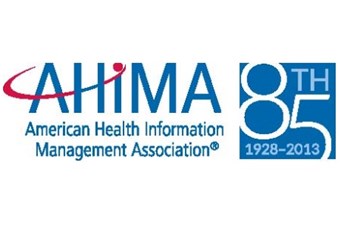Survey Takes Stock Of ICD-10 Preparedness Issues

Staffing, Education Among Key Concerns
Communication and planning are the key factors to a successful transition to ICD-10-CM/PCS, and once organizational buy-in is achieved, rapid action with quarterly auditing of progress is a must. That’s one of the conclusions of a national survey of ICD-10 readiness conducted by the American Health Information Management Association (AHIMA) and TrustHCS and reported in the June 2013 Journal of AHIMA in “ICD-10-CM/PCS Status Check.”
The survey interviewed more than 300 health information management (HIM) professionals representing 293 healthcare organizations. The goal of the survey was to identify the themes and best practices that are emerging as the healthcare industry moves closer to ICD-10’s October 1, 2014 deadline. The survey touched on preparedness issues such as education, staffing, computer-assisted coding (CAC), and clinical documentation improvement (CDI).
For example, respondents said they are expecting to increase their coding labor needs by 23 percent over the next two years. Specifically, HIM professionals surveyed expect a spike in coding needs from the second quarter of 2013 through the first quarter of 2014.
Among facilities expecting to expand coding labor for ICD-10, 63 percent of respondents said they will directly hire additional coders. Fifty-two percent of respondents said they will hire more inpatient coders, and 59 percent will bring additional outpatient coders on board. A quarter of respondents say they will outsource, with over 50 percent preferring a per-hour rate. A smaller percentage of hospitals plan to use a combination of hiring and outsourcing for inpatient and outpatient coding: 15 percent and 11 percent respectively.
"Preparation is essential with a big initiative such as implementing ICD-10," said AHIMA CEO Lynne Thomas Gordon, MBA, RHIA, CAE, FACHE, FAHIMA. "But we recognize the payoff in ensuring our nation's healthcare information and data systems are using up-to-date terminologies and classifications to improve our healthcare knowledge and systems."
The article suggests four key action items for organizations to stay on track for ICD-10 implementation:
- Get the mix right: Time, money, and human resources investments in CAC, CDI, education, and audits must be balanced, and all four efforts must be integrated.
- Trust but verify: Auditing of ICD-10 progress should be part of the entire transition project plan.
- Plan to hire: Coder shortages will worsen and backlogs will occur due to ICD-10. This is the year to plan for hiring spikes, so budget accordingly. With many providers expected to begin dual coding in 2013, additional coders will be particularly needed.
- Fine-tune budgets: Finally, 2013 is the year to review existing ICD-10 budgets and to fine-tune them for more extensive coder education requirements and refined industry benchmarks.
Also in this issue
The June issue of the Journal of AHIMA also includes:
- A look at how providers and HIM professionals can prepare for ICD-10, including analyzing its financial impact, testing, and mitigating coder productivity losses in “The Final Countdown.”
- Clinical documentation improvement professionals are the ideal individuals to work with medical staff to ensure that documentation in the patient health record is complete and accurate, as well as detailed enough for accurate ICD-10-CM/PCS code assignment. This month’s practice brief covers “Using CDI Programs to Improve Acute Care Clinical Documentation in Preparation for ICD-10-CM/PCS.”
Read these articles and more in the June issue of the Journal of AHIMA or online at journal.ahima.org.
About AHIMA
Celebrating its 85th anniversary this year, the American Health Information Management Association (AHIMA) represents more than 67,000 educated health information management professionals in the United States and around the world. AHIMA is committed to promoting and advocating for high quality research, best practices and effective standards in health information and to actively contributing to the development and advancement of health information professionals worldwide. AHIMA’s enduring goal is quality healthcare through quality. For more information, visit www.ahima.org.
Source: AHIMA
